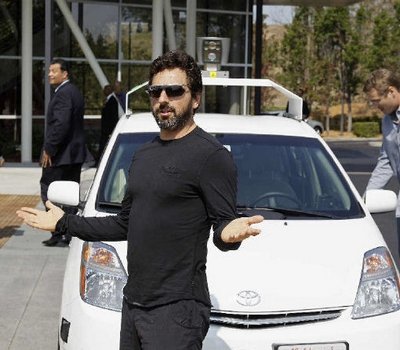
Google says that cars it has programmed to drive themselves have started to master the navigation of city streets and the challenges they bring, from jaywalkers to weaving bicyclists – a critical milestone for any commercially available self-driving car technology.
Despite the progress over the past year, the cars have plenty of learning to do before 2017, when the Silicon Valley tech giant hopes to get the technology to the public.
“I think the Google technology is great stuff. But I just don’t see a quick pathway to the market,” said David Alexander, a senior analyst with Navigant Research who specializes in autonomous vehicles.
His projection is that self-driving cars will not be commercial available until 2025.
Google’s self-driving cars already can navigate freeways comfortably, albeit with a driver ready to take control. In a new blog post, the project’s leader said test cars now can handle thousands of urban situations that would have stumped them a year or two ago.
“We’re growing more optimistic that we’re heading toward an achievable goal – a vehicle that operates fully without human intervention,” project director Chris Urmson wrote. The benefits would include fewer accidents, since in principle machines can drive more safely than people.
For now, Google is focused on the predictably common tasks of city driving.
To deal with cyclists, engineers have taught the software to predict likely behavior based on thousands of encounters during the approximately 10,000 miles the cars have driven autonomously on city streets, Google spokeswoman Courtney Hohne said.
The software plots the car’s path accordingly – then reacts if something unexpected happens.
Before recent breakthroughs, Google had contemplated mapping all the world’s stop signs. Now the technology can read stop signs, including those held in the hands of school crossing guards, Hohne said.
While the car knows to stop, just when to start again is still a challenge, partly because the cars are programmed to drive defensively.
At a four-way stop, Google’s cars have been known to wait in place as other cars edge out into the intersection.
The cars still need human help with other problems. Among them, understanding the gestures that drivers give one another to signal it’s OK to merge or change lanes, turning right on red and driving in rain or fog (which requires more sophisticated sensors).
To date, Google’s cars have gone about 700,000 miles in self-driving mode, the vast majority on freeways, company representatives said.

 JOIN DRIVERN TAXI AS PARTNER DRIVER TODAY!
JOIN DRIVERN TAXI AS PARTNER DRIVER TODAY!










